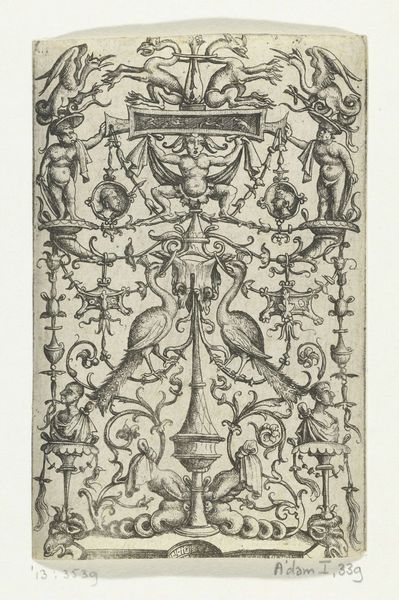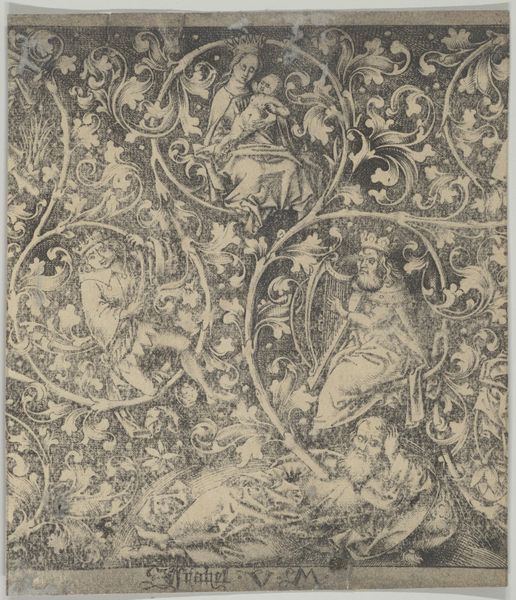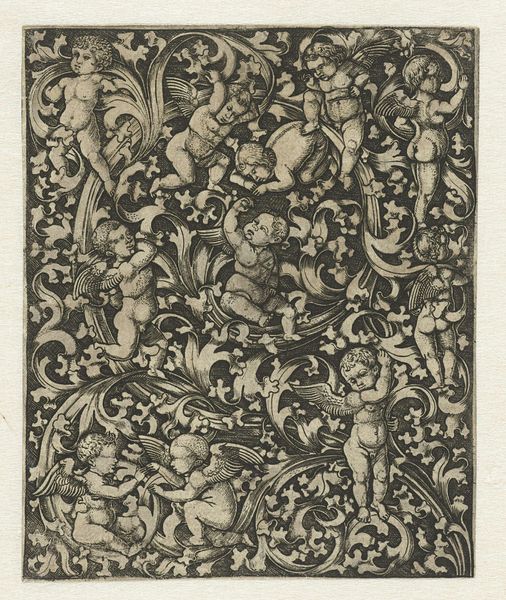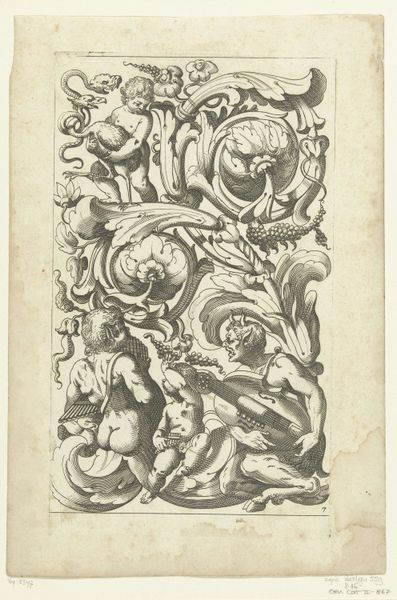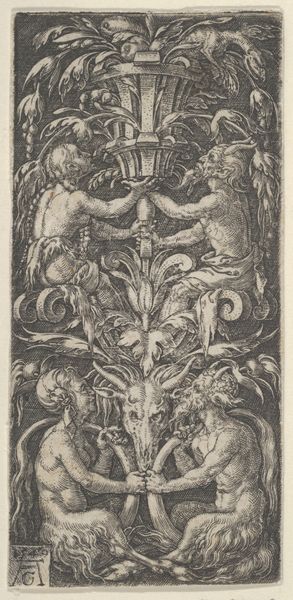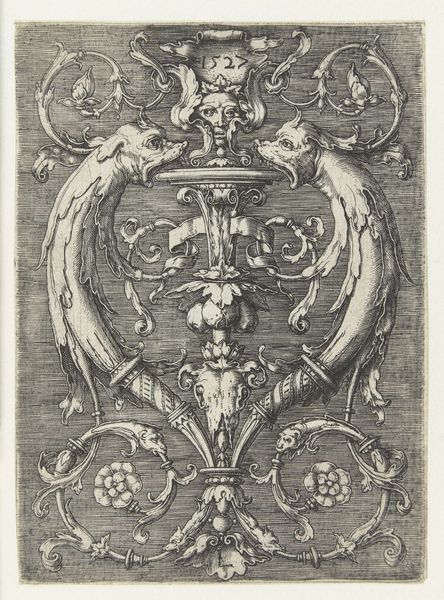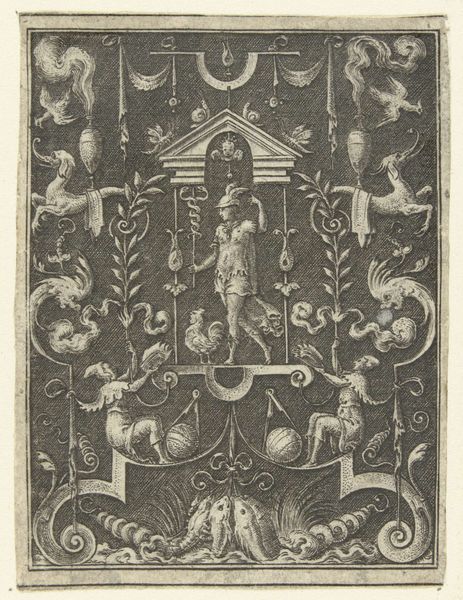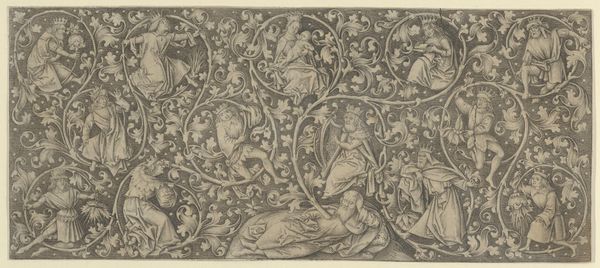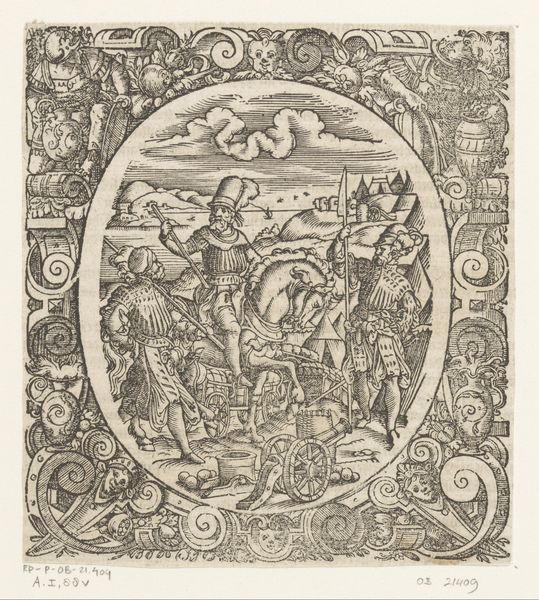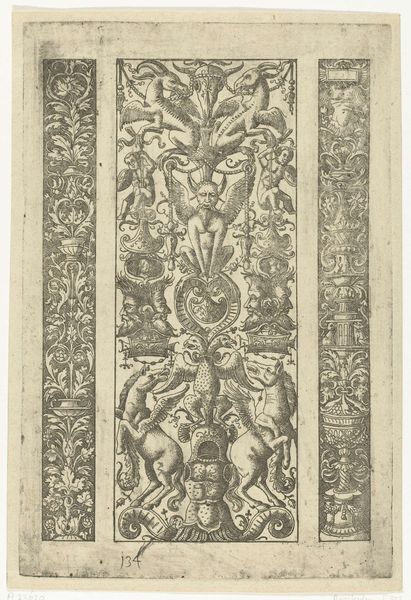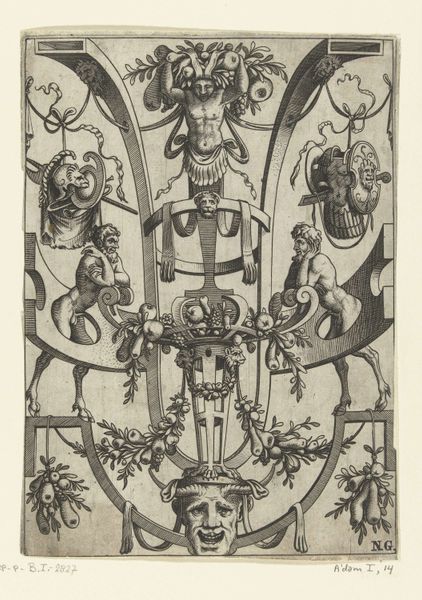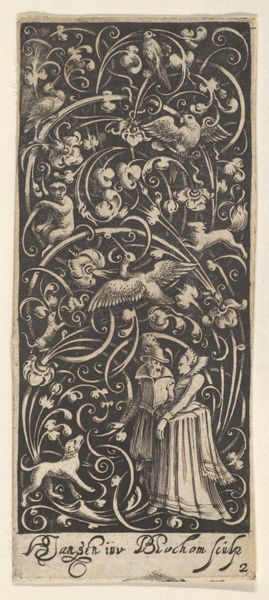
drawing, print, engraving
#
drawing
# print
#
landscape
#
northern-renaissance
#
engraving
#
miniature
Dimensions: height 206 mm, width 137 mm
Copyright: Rijks Museum: Open Domain
Curator: At first glance, this strikes me as a world brimming with allegorical potential—overflowing, almost claustrophobic. Editor: Let's unpack that. What we're looking at is "Medallion with Grape Vines, Strawberry Plants and Grotesques" by Daniel Hopfer, dating from around 1480 to 1536. It’s an engraving and drawing. Hopfer was working during the Northern Renaissance. What strikes you most about its visual density? Curator: Precisely! I'm interested in how it democratizes ornamentation. We see classical motifs mingled with flora, fauna, and these unsettling grotesques. Is this intended as accessible, decorative art, or a display of artisan skill intended for a rarefied patron? The tension lies in this ambiguity of production. Editor: Absolutely. And think about the consumption. These prints would have been relatively affordable, circulating imagery widely. Notice the inclusion of overtly Christian symbolism as well, what with Mary at the center. How does she relate to the overall symbolic scheme? Curator: A counterpoint, perhaps. The natural world is in delightful—if unsettling—chaos, but the central figures provide focus. I question the societal impulse to put her within it as a force that creates some kind of meaning from it. But what purpose do such miniature works serve? Editor: One interpretation: these prints reinforced social hierarchies. While available, they also visually cemented certain power structures. The image of a protective deity amidst this dense ornamentation reinforces divine oversight and moral order, however fantastical its environment may be. Think of this from a perspective of class and power: these prints and miniatures help visualize these hierarchies. Curator: And what of Hopfer's choice of engraving? A laborious process... but that allows for multiples! This opens up an entirely new field for exploration for prints and engraving! Editor: Precisely. These prints traveled widely, carrying artistic styles across regions. But returning to its impact, there is an enduring quality of a chaotic energy harnessed, the imposition of order of something quite anarchic and perhaps the beauty within it? Curator: I agree. Examining the modes of creation and socio-cultural dissemination here lets one think deeply. Editor: Ultimately, Hopfer offers us an image to explore the complex interplay of nature, culture, faith and consumption within Northern Renaissance society.
Comments
No comments
Be the first to comment and join the conversation on the ultimate creative platform.
